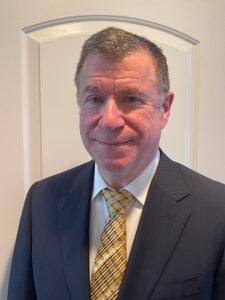If you’re considering Platelet Rich Plasma (PRP) to treat a painful condition, every bit of positive support for its natural healing ability can help you make a more informed and confident decision. The following is from an article in the New Yorker about Chris Waddell, an élite athlete for more than two decades, who discovered the power of PRP.
Chris Waddel has won twelve medals in downhill skiing, including five golds, in four Paralympic Games events; he was a world-record-holding wheelchair track sprinter; and, in 2009, he became the first paraplegic to climb Mt. Kilimanjaro, using his arms to power a customized four-wheeled cycle. Even at forty-five, Waddell, who was paralyzed in a college skiing accident, has a muscular, sharply defined upper body, the product of thousands of hours of training.
But all this exercise has taken a toll. Several years ago, Waddell’s shoulders began to ache constantly. Last year, he tore a rotator cuff while weightlifting, and began having trouble lifting himself into and out of his wheelchair. “I had no control,” he said. “When I was getting off a couch, I had to marshal all of my strength.”
Waddell, who lives in Park City, Utah, went through a range of treatments. “I tried a lot of rehab, I did a lot of exercises, I had a cortisone injection,” he said. “I wasn’t making any progress.” Several orthopedists told him he would have to accept being in pain for the rest of his life.
Surgery Seemed Imminent
Rotator-cuff surgery seemed like Waddell’s last option. It would mean losing the use of his arms, and his ability to move on his own, for several months. And he worried that, if surgery failed, he would have to give up any strenuous physical activity. “Being able to ask a lot of my body makes me feel good,” he said. “It’s a lot of who I am.”
As Waddell considered his options, a friend suggested looking into a treatment known as platelet-rich plasma, in which doctors inject a modified version of the patient’s own blood into injured tissue. Eager to avoid surgery, Waddell flew to Washington, D.C., to see a sports-medicine doctor who specializes in PRP. The doctor found that Waddell had a torn rotator cuff in one shoulder and a torn biceps tendon in the other. Using ultrasound to locate the precise locations of the injuries, the doctor injected the tendon and rotator cuff with PRP. Over the course of a month, he repeated the procedure twice more.
PRP Was The Solution
In the weeks afterward, Waddell saw his strength improve and his pain decrease; he says he is now “close to one hundred per cent,” and is no longer thinking about surgery. “I was shocked that I kept getting better,” he said. “It had been so bad for so long.”
The outcome didn’t surprise the doctor, who estimates that he has treated around five thousand people with PRP over the past five years. He says that the treatment can repair tendons, ligaments, cartilage, and nerves, and can even re-grow tissue that has been frayed or damaged. This, he suspects, is what happened with Waddell’s rotator cuff. “For a lot of conditions, it’s almost a wonder drug,” the doctor said. “We’ve figured out a way to help the body regenerate itself.”
Dozens of studies, some in cells, some in animals, and some in humans, have found that the procedure can repair chronic tendon injuries, heal damaged muscles and ligaments, and reduce arthritis pain. Interest in PRP is growing in part because traditional treatments for joint problems, such as arthritis, torn ligaments, and damaged tendons, are only marginally effective. Surgery sometimes succeeds, but it often doesn’t help and can cause further damage; cortisone shots can temporarily reduce pain, but they don’t address the underlying problem; physical therapy can be effective, but it often doesn’t work. Many people are left to limp along with ice and ibuprofen.
“Patients have been dissatisfied with what we have to offer them,” said Allan Mishra, an orthopedic surgeon at Stanford University Medical Center, who has been researching the technique and has used it on his patients for more than a decade. He thinks it will revolutionize orthopedic treatment. “Fifty years ago, getting a new knee was unimaginable,” he said. “Now it’s commonplace. This will have the same trajectory.”
The PRP Process
The process of making PRP is relatively simple. A doctor draws between half an ounce and an ounce of the patient’s blood and spins it in a centrifuge to separate the platelets, the disc-shaped cells best known for their crucial role in clotting, from most of the red and white blood cells. The spinning concentrates the platelets in the plasma, the liquid part of blood. When the process is finished, the number of platelets in the plasma increases by a factor of between two and twenty, depending on the spinning method. The substance is then injected into the site of the injury, whether it’s a ligament, a tendon, or an arthritic joint.
A few weeks before this article appeared, Waddell completed a month-long, fifteen-hundred-mile cycling trip from Seattle to San Diego, raising awareness about his educational foundation along the way. Using his arms to power a custom-fitted three-wheeled bike, he rode about sixty miles a day. He says he couldn’t have done it without PRP. “For me, it’s been a total godsend,” he said. “I didn’t want to sit on the couch for the rest of my life.”
At the present time, PRP Treatments are not covered by medical insurance.
